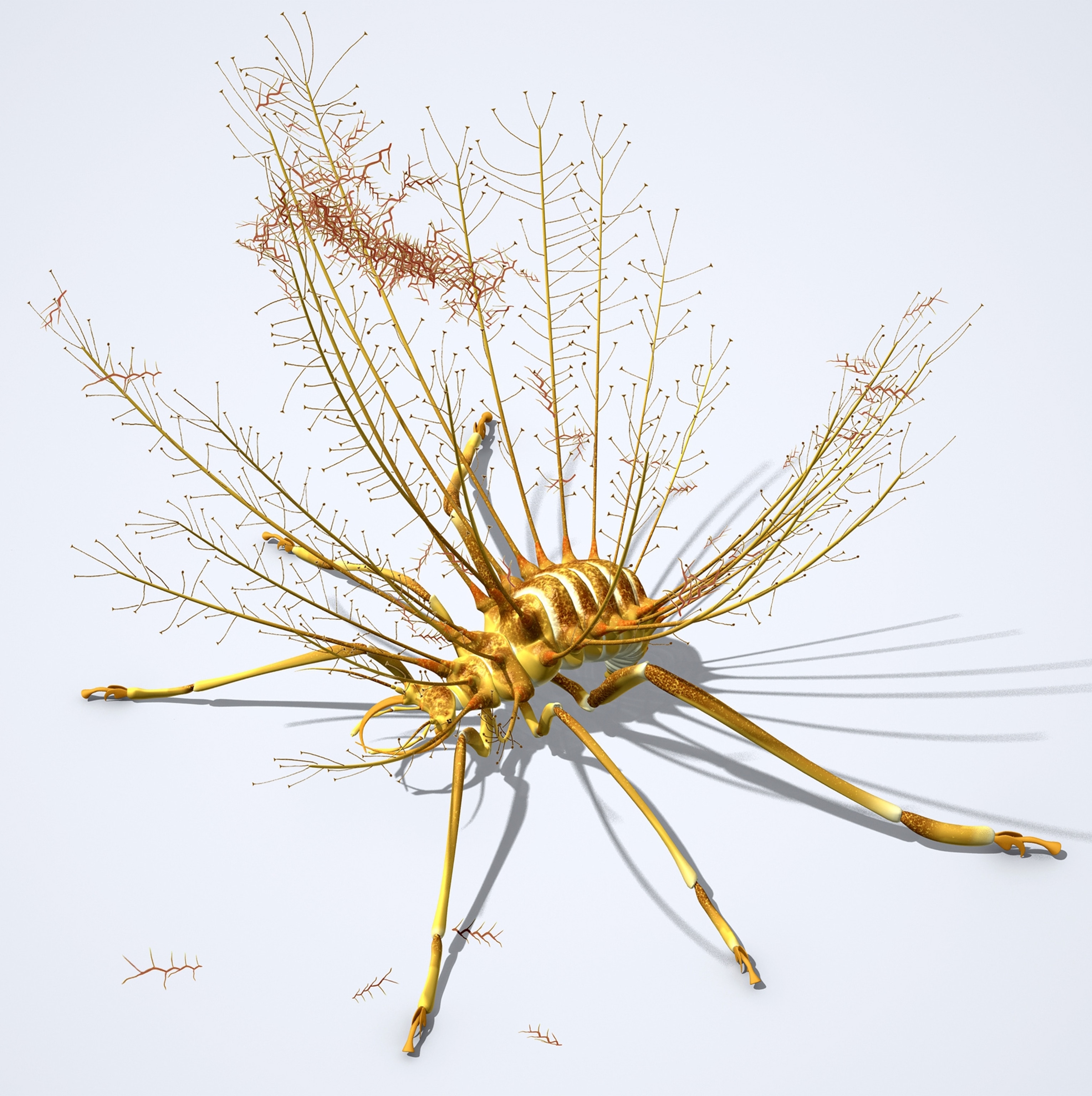
A 110-Million-Year-Old Trash Collector
Fossilized lacewing larva displays oldest known camouflaging behavior in insects.
In a group of insects called green lacewings, larvae often make a habit of decorating themselves with bits of vegetation, insect carcasses, or whatever else the young pick up from their surroundings to use as a disguise as they sneak up on prey and to hide from predators such as birds.
Researchers had long speculated that this was an ancient behavior, but just how ancient was difficult to say until a recent find in Spain. There, in a forest 110 million years ago, a lacewing larvae was encased in amber along with its collection of fern pieces tangled on protrusions on its back.
Not only is this the earliest known occurrence of this behavior in lacewings, said paleoentomologist and study co-author Michael Engel at the University of Kansas, but "it's also the earliest occurrence of this camouflaging behavior among insects as a whole."
Lacewing larvae aren't the only invertebrates to employ odd camouflage techniques—decorator crabs will stick live animals, such as sea anemones, on their shells to blend in with their surroundings. (See photos of other undersea camouflage techniques.)
But ancient use of this behavior in lacewing larvae had been seen only in 45-million-year-old fossils from the Dominican Republic. The new Spanish fossil, described in a study to be published this week in the Proceedings of the National Academy of Sciences, pushes the age of this behavior back to the early Cretaceous.
When doctoral student Ricardo Pérez-de La Fuente of the University of Barcelona discovered the fossil in amber he had collected, he and Engel were dumbstruck.
"It's one thing to crawl along and have things get stuck to you," Engel said. "It's another thing to select materials from your environment to put on your back—for a little larva, this is a complex behavioral suite."
The trash packet entombed with its collector is composed only of fern trichomes, or the little hairs that give some ferns a fuzzy appearance.
"It's likely [the larva] could have been very selective of what to put on its back," said Engel.
Since the lacewing lineage extends even further back in time to the latter part of the Jurassic, it's possible that a primitive form of this camouflaging behavior may go back that far as well, Engel said. (Related: "Oldest Known Spiderweb Found in Ancient Amber.")





